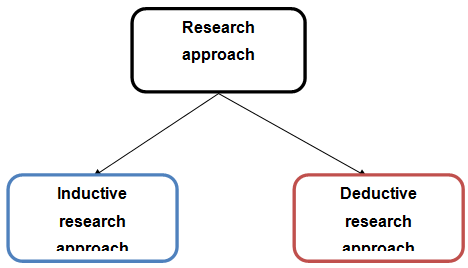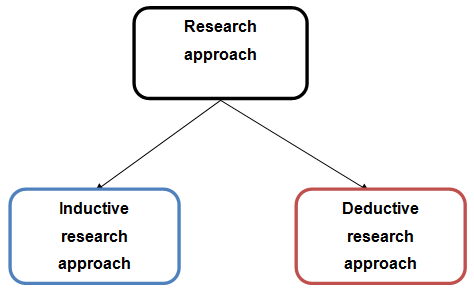Mobile cloud storage users cloud computing
Answer: Impact of Cloud Computing On ERP
Background Section
Background Of The Study
The ERP based on the cloud computing will provide the customers a benefit about the scalability of the application and reduce the cost of hardware (Chen, Liang and Hsu, 2015). The delivering of the ERP of a company can be made easier by using the technology of the cloud computing through a SaaS (Software as a Service) model for the customers who are willing to use the cloud ERP and do not wants to deal with any software and the hardware upgrades though dropping open expenses. The internal cloud can also build in the business to reduce the cost of hardware and manage the integrated local access in the own database server.
The main purpose of doing this study is to understand the impacts of cloud computing in the implementation of the ERP system of business. Understanding the role of the levels of cloud computing and how these levels used in the ERP system and gives a benefit to the business.
IaaS (Infrastructure as a Service)
PaaS (Platform as a Service)
Software as a Service (SaaS) - this program is hosts by the service of the supplier to access the resources of the customers through the internet. In this service, the code of the same program can be used by many customers but they also can have their different space in the cloud (Mozammel-Bin-Motalab and Al Mamun Shohag, 2011).
Also, there are different types of cloud. Private cloud consists of many collections of the physical servers that can be only run for the single customer. In case of the dedicated resources, the private cloud is rented. The public cloud consists of many virtual servers where many customers shared a single physical hardware. On the case of the demands, the public cloud is rented. The hybrid cloud is a combination of the both private and the public cloud. The customers rents or operates the hybrid cloud on demands (Rani, Rani and Babu, 2015). The community cloud is shared by the different organization and is managed by the third party or the involved organization. The internal cloud is the network of the cloud that exists in the IT infrastructure of the company. The external cloud is the service of the cloud that is provided by the service provider of the cloud to the customer of the IT infrastructure (Repschläger and Zarnekow, 2011).
PaaS Using In The ERP System
This level is not really suited for the condition of the ERP system. The previously defined resources are provides to the software which is very effective for the progress, testing and distributing the software.
Problem Statement
The main problems that are identified in this study are the majority of vendor use SaaS-based cloud computing in terms of designing or implementing ERP system in a business. Apart from that, it has been also identified that to implement cloud computing on ERP system especially in business is finance. To develop cloud-based ERP system in business, the organization has to invest large amount. Therefore, lack of financial resources are the major problems. As the demands of the online services are increasing, loads of the cloud are also increasing and due to the overload of the services will lose many of the customers. The service of the cloud computing gives the company flexible and the scalability that only helps the needs of the customers temporarily. In case of implementing a full new module sets that are integrating by the standard ERP module, the customization becoming very difficult. Most of these problems are solved by implementing the cloud computing in the ERP system of the business (Breeding and Kroski, 2012). This study refers to gives some of more efforts in the implementation parts. Hence, some of the research questions are proposed in the further discussion.
Research Questions:
The questions of the research are as follows:
Hypothesis Of The Research:
H0: Cloud computing has no impact on the system of Enterprise Resource Planning.
To investigate the importance of Enterprise Resource Planning system on the modern perspective of business
To identify the necessities of cloud computing for the ERP system
There are different types of research philosophies; those are positivism, post-positivism, realism. Research the philosophy helps to provide knowledge and proper dimension to the particular study of the research. Positivist philosophy of research helps to deal with the real fact and data of the particular research study (Acemoglu et al. 2000).
On the other hand, post-positivism helps the researcher for cross checking the real data and fact of the research. Realism deals with the objective reality of the research. Therefore, post-positivism helps to deal with different real data of the research.

Figure 1: Approach of the research

Figure 2: Data collection process
Sample:
For this research purpose, the researcher will take the help of probability sampling method for selecting the managers and customers of the company. With the help of simple random technique, the researcher can collect 60 potential customers of this company. On the other hand, a researcher will take interview of four managers with the help of quasi-experimental technique.
As discussed by Benson and Clay (1998), online marketers often use cloud computing for providing better customer services to the customers. This company provides online selling facilities for the customers. Therefore, it should use cloud computing for effective enterprise resource planning process (Bright, 2009).
ERP can become very efficient with the help of the process of cloud computing. ERP can be able to deliver an integrated approach to the whole view of a business process within the organization. In today's competitive world, the advancement of technology has influenced every company to utilize systems of cloud computing for the effectiveness of Business Company. This can be very effective are of researching the essentials of cloud computing for developing the process of ERP within the business aspects of the organization (Bergh and Ketchen, 2009).
(Created By Author)
This researcher will follow these time horizons for the research purpose. The researcher will collect the data from different primary and secondary sources. In the first month, the researcher will select the topic of the research. In the next month, the researcher will collect necessary data from the secondary sources. In the next month, the researcher will frame the layout of the research. In the next month, the researcher will review the existing literatures of the particular research purpose. In next month, the researcher will form the plan of the research. After this month, the researcher will select particular strategies of the research. After this month, the researcher will start collecting effective information from different primary sources. The process of interpreting the data will take two months to be completed. In this month, the researcher should be able to draw an effective conclusion from the research study. In the last month, the researcher will start to draw conclusion of the research study. This process will be continued in the last month of final submission. In this month, the researcher will finally submit the research.
All the research questions namely, the importance of cloud computing system and the importance of ERP system has been evaluated with the help of both primary data and secondary data analysis of the research. In this research, the researcher have conclude to one of the hypotheses of the research i.e. H1 which states that cloud computing has a considerable impact on the overall process of Enterprise Resource Planning system. Also to this, the researcher has also accomplished the fourth and fifth objectives of the research through the analysis of primary data collection i.e. the questionnaire and secondary analysis of the research i.e. the literature review. The researcher will also evaluate the research on the basis of the cross-sectional approach. It can be further interpreted that the research has been conducted by considering all the given elements of the research.
However, the researcher has faced several challenges while conducting the given research study. These research limitations are in the form of time management and cost management. On the opposing, it can be interpreted that the researcher has conducted the research on the basis of ethical considerations. This means no data will be manipulated by the researcher and any of the information has not been disclosed by the researcher to any third person.
Artadi, E. V., and Sala-i-Martin, X. (2003). The economic tragedy of the XXth century: growth in Africa (No. w9865). National Bureau of Economic Research
Awad, H., 2014. Investigating Cloud ERP Challenges in Public Universities in the Middle East “Field Study”. IOTCC, 2(3), p.12.
Bernard, H. R. (2011) Research Methods in Anthropology: Qualitative and Quantitative Approaches. 5th ed. Plymouth: Alta Mira Press.
Bertocchi, G., and Canova, F. (2002). Did colonization matter for growth?: An empirical exploration into the historical causes of Africa's underdevelopment.European economic review, 46(10), 1851-1871
Bryman, A. and Bell, E. (2011) Business Research Methodology. 3rd ed. New York: Oxford University Press.
Chen, C., Liang, W. and Hsu, H., 2015. A cloud computing platform for ERP applications. Applied Soft Computing, 27, pp.127-136.
Rani, B., Rani, B. and Babu, A., 2015. Cloud Computing and Inter-Clouds – Types, Topologies and Research Issues. Procedia Computer Science, 50, pp.24-29.
Repschläger, J. and Zarnekow, R., 2011. Enterprise Resource Planning (ERP) Systeme im Spannungsfeld zwischen klassischem IT-Betrieb und Cloud Computing. CON, 23(6), pp.290-297.
Vimalkumar, P., 2012. Implementation of Erp in Business Process Based On Cloud Computing. IOSR Journal of Business and Management, 3(1), pp.45-50.
Weinman, J., 2014. The Nuances of Cloud Economics. IEEE Cloud Computing, 1(4), pp.88-92.
